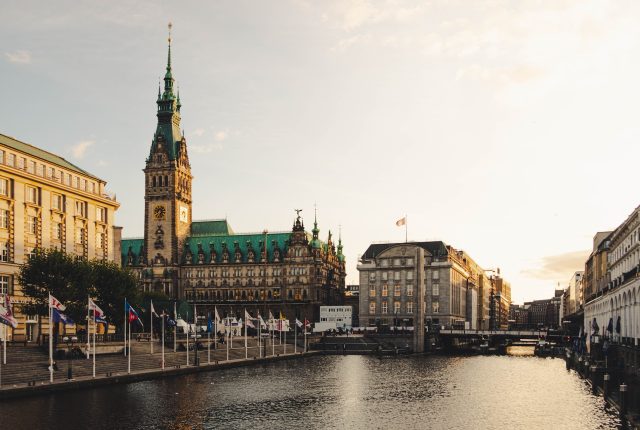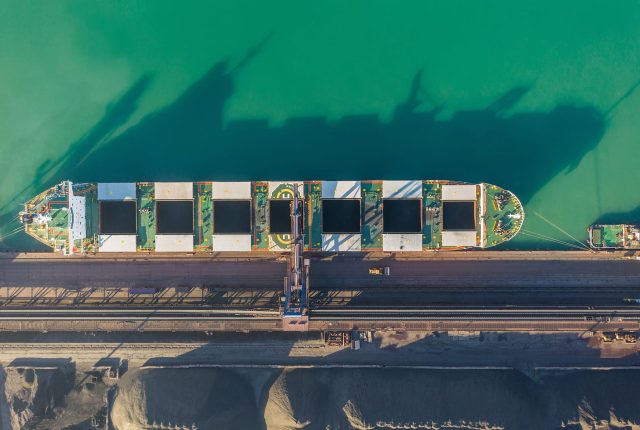
URSABLOG: Footprints on the Sands of Time
This week’s URSABLOG is written by Dionysios Tsilioris, Research Analyst at URSA Shipbrokers.
As a child, I was given as a gift a documentary on a VHS tape about the Arecibo Observatory. Built during the high of the Cold War and the missile frenzy of the 1960s, the observatory was owned and operated by the U.S. National Science Foundation (NSF) and was located outside the continental United States on the U.S. territory of the Caribbean Island of Puerto Rico, to the south of its namesake town, Arecibo. With construction completed in 1963, the National Astronomy and Ionosphere Center was the largest radio telescope on Earth until 2016. Equipped with a cable-mounted, steerable radio receiver and a colossal spherical reflector built into the ground, the infrastructure was powerful enough to detect radio-frequency radiation emanating from outer space and assist scientists with research in astronomy, as well as providing an additional layer in the U.S. anti-ballistic missile defense.
My younger self was fascinated by this now long-lost documentary, but what really captivated me was the interstellar message that humanity emitted from the Arecibo Observatory in 1974, a cosmic dispatch simply known as the “Arecibo Message“. This piece of interplanetary communiqué, its graphic resembling traditional Greek embroidery patterns, was humankind’s first attempt to make its presence known across the galactic abyss.
Much closer to home, in downtown Athens, I enjoy taking a morning walk or a cycling trip through the pathways of Philopappou Hill, which I find offer a pleasant escape from the concrete-dominated and often diesel-smelling city center.
A particularly pleasant spot, when coming from Petralona, to the southwest of the Hill, is the northwest corner of the ancient deme of Koile, west of Kimon’s Tomb, son of Miltiades. The spot offers an excellent vantage point toward the southwestern suburbs of Athens and Piraeus. On a clear day, I can see all sorts of vessels waiting at Piraeus roads. This is a location with a view unaltered since antiquity.
On Philopappou Hill, one’s proximity and access to the physical manifestations of our ancient history is unparalleled, even by Greek standards. The Hill is a place where you can walk your dog by Socrates’s prison, fly a kite on Clean Monday – as many do – beside Diateichisma, a part of the ancient city walls of Athens’ fortifications built after the Battle of Chaeronea in 338 B.C., jog by Pnyx – the seat of the popular assemblies of Classical Athens – and admire the view of the Propylaeum and the Parthenon next to the orator’s bema, where Phillip von Folz had Pericles delivering his funeral oration in his painting.
You can enjoy all of the above without paying an entrance fee, without being restricted by cordoned off spaces or artwork-protective plastic frames. This is a place where you can simply walk by and touch and feel the stones carved by our forefathers or their successive civilizations, or by couples in love who carved their initials in some ageless stone.
Philopappou Hill was also the place where the early-modern Greek state decided to build its first observatory in 1842. This endeavor was eventually financed by a wealthy member of the Greek diaspora, Georgios Sinas, a 19th century tobacco and cotton merchant residing in imperial Vienna, where he also served as the director of the Oesterreichische Nationalbank, the central bank of Austria, for a 25-year tenure. The design of the National Observatory in Athens was entrusted to another prominent figure of the age, the Danish architect Theophil Hansen, an ardent representative of Neoclassicism.
The impoverished, war-ravaged and underdeveloped Greece of the period needed an observatory, where astronomers, through night sky observation and the practical application of mathematics, would daily establish the exact time of noon and thus allow the nation to synchronise its clocks. At noon, the observatory would raise a large red flag or drop a time ball.
Upon noticing the signal from the National Observatory, the Metropolitan Cathedral of Athens would ring its bells to herald noon. The announcement of noon would then spread throughout the city as other churches followed suit with their bell toll. Of equal importance was that the primitive optical signal reached Piraeus, so that the ships at port knew when noon was in our longitude so that they could in turn synchronize the settings of their marine chronometers.
Undoubtedly, time remains an important consideration for those in the shipping industry. The daily life in a shipbroking office is centered around time; offers, counteroffers, “valid until 1800 Greek time”, noon reports, seasonal patterns in a number of trades, Panamax FFA movements in April, Q2, and Q3 all revolve around time, as does the market news: Argentine soybean exports being delayed as farmers anticipate that the exchange rate will work in their favor, the UN-backed Black Sea Grain Initiative being extended or not beyond March 18, China reimposing import tariffs on Australian coal come April 1 etc.
Often it seems that we can only watch events unfold before our eyes as time passes, with our actions lasting only a fraction of an instant. Our human nature restricts us to waiting, planning –directing most of our worry towards the worst outcome, always trying to make the most of the limited information on which we act, and hoping for the best.
Do our individual actions within the market lack the magnitude to have an impact in the long run? Is our individual participation in the market – be it chartering, ship sale and purchase, or any other market – so relatively insignificant in scale as to not even dent its motion? Do brokers, owners, charterers, corporations, or countries have the critical mass for market currents to gravitate – to ebb and flow – at their announcements, decisions, and actions?
In August 2020, the cables supporting the receiver platform of the Arecibo Telescope snapped. After further damage to the cable structure in November 2020, the NSF announced that the telescope was in danger of collapse and that the cables could not be safely repaired. The NSF decommissioned the observatory permanently and in 2022 reaffirmed its decision not to rebuild it. While the Arecibo telescope was falling into disrepair, China was building its own gigantic radio telescope in Guizhou, and with a collection area more than two-and-a-half times that of the Arecibo Observatory, it superseded the latter as the largest in the world. FAST, the Five-hundred-metre Aperture Spherical radio Telescope, as it is named, became operational in 2016, its construction having started in 2011. The scale of the endeavor was so massive that in order to build the “Eye of Heaven”, the local authorities had to relocate between 8,000 and 9,000 people from neighboring villages to create a large enough radio-silence zone.
China’s ambitions, increasingly wealthy population, and a consumption rate of raw materials that surpasses other nations and economic unions means that shipping’s fortunes will continue to depend to a large extent on the health of the Chinese economy for the next couple of decades. However, just as in the cosmological scale, where each object exerts a gravitational force on all others, so in international trade, China cannot and will not be the sole engine of cross-border seaborne trade growth, disruption, and opportunities.
It is doubtful whether our individual actions can influence a market akin to the one that classical economists had in mind when describing the conditions of perfect competition. However, what we can definitely do, intentionally or unintentionally, is plot our own course through this business and “leave behind us footprints on the sands of time“. Footprints that others will follow or deviate from, or attempt to kick away, and, as in science, build and expand upon to make our work more productive, significant and meaningful.
Best regards,
Dionysios Tsilioris


